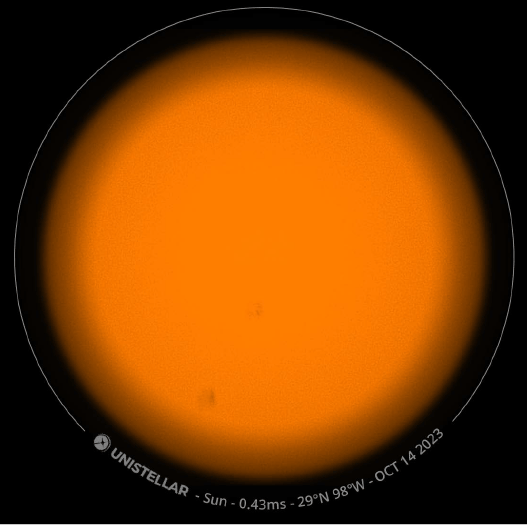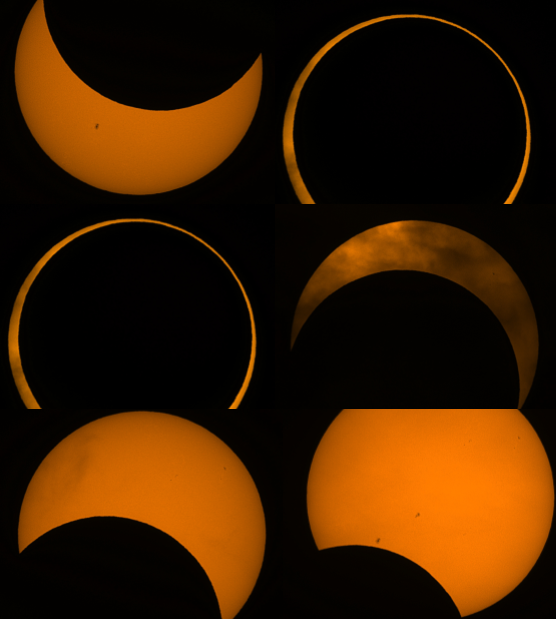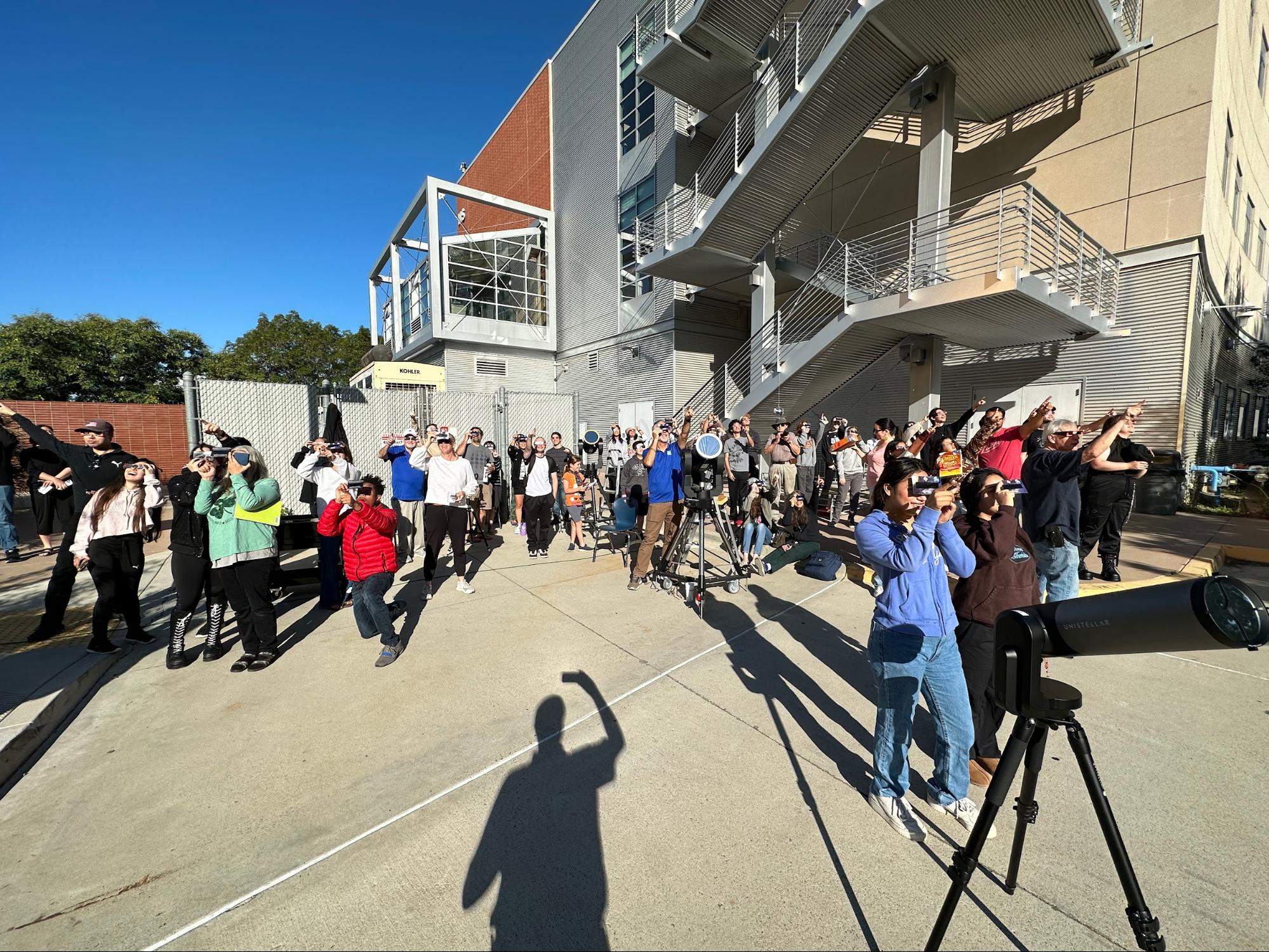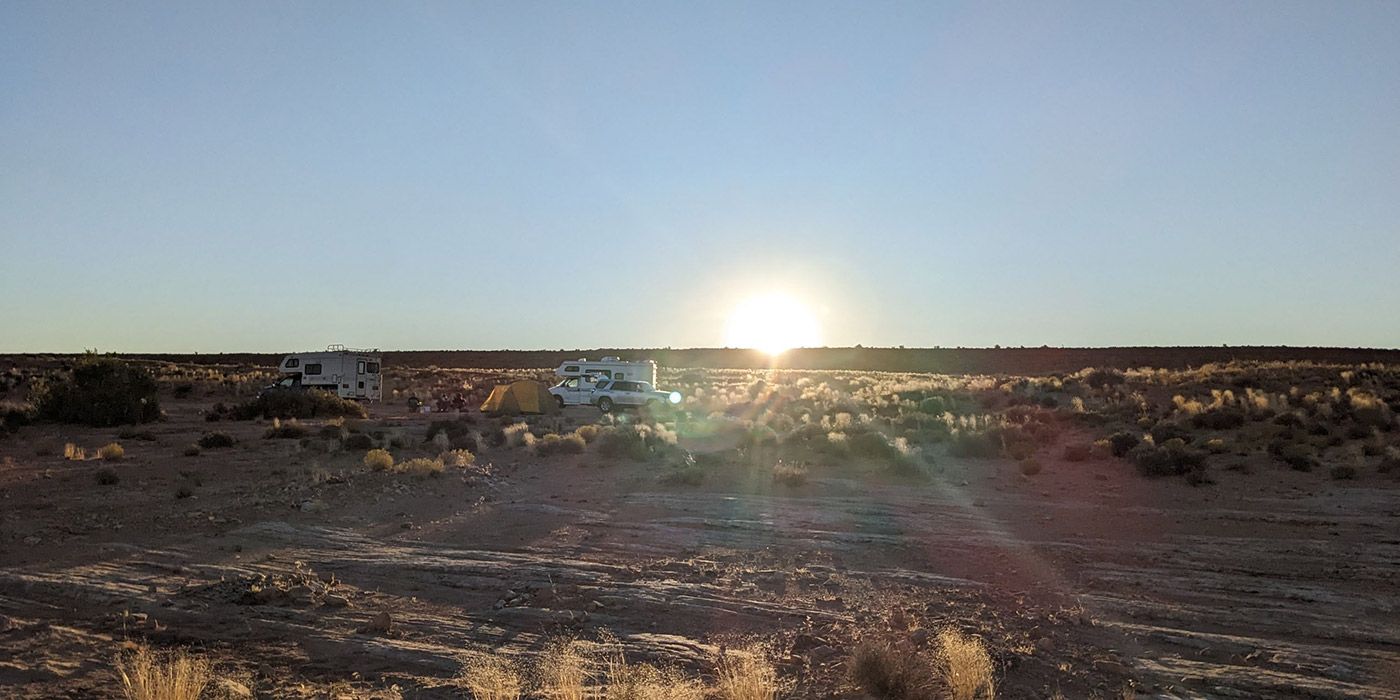
Dr. Ian Weaver, Unistellar education lead and astronomer at the SETI Institute, had the incredible opportunity to witness the annular eclipse last week at Bears Ears National Monument in Utah, where he connected with several members of the Unistellar network.
During this adventure, Ian flew from San Francisco to Salt Lake City, then embarked on a 6-hour drive to meet with members of the Unistellar College Astronomy Network (UCAN) in the heart of the eclipse’s path. The journey allowed him to reconnect with his inner adventurer and dust off his old Boy Scout hiking gear.
The group, led by UCAN member Professor Paul McCudden and cultural anthropologist Professor Patrick Staib, included college students studying “Astronomy of Ancient Cultures” and “Southwest Field Exploration.” Their campsite was in a culturally and archaeologically significant area co-managed by the Bureau of Land Management, the Manti La Sal National Forest, and the five Tribes of the Bears Ears Commission. Home to more than 100,000 Native American sacred sites, the space holds profound importance, and being granted permission to be there for the event was a privilege. The group had the opportunity to learn about the diverse traditions related to solar eclipses among the different tribes.
As they prepared for the eclipse, the team set up their observation equipment, which included eVscopes, a dedicated Coronado solar telescope, a sun spotter and even a colander, each offering a unique view of the Sun as the eclipse progressed.
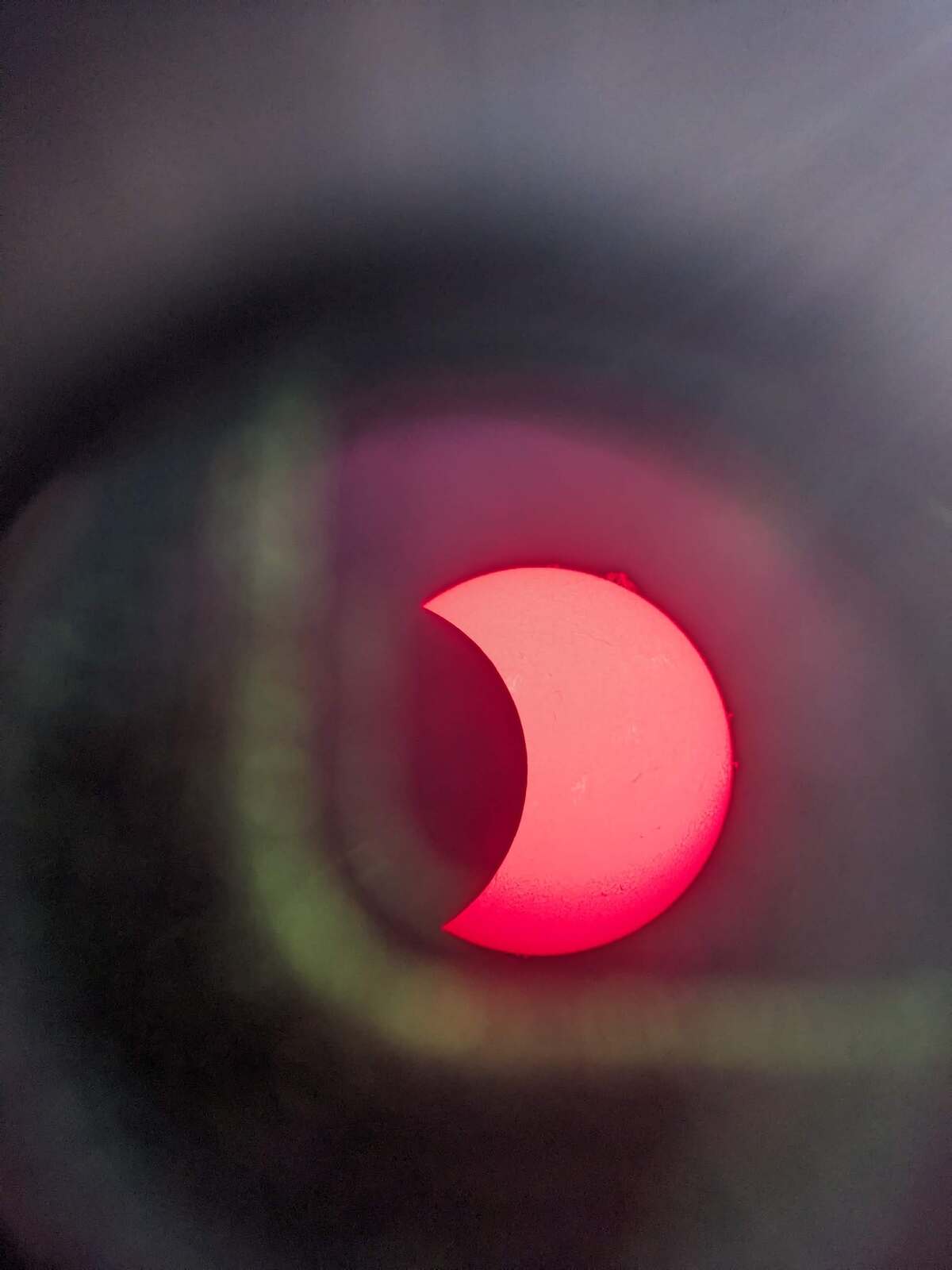
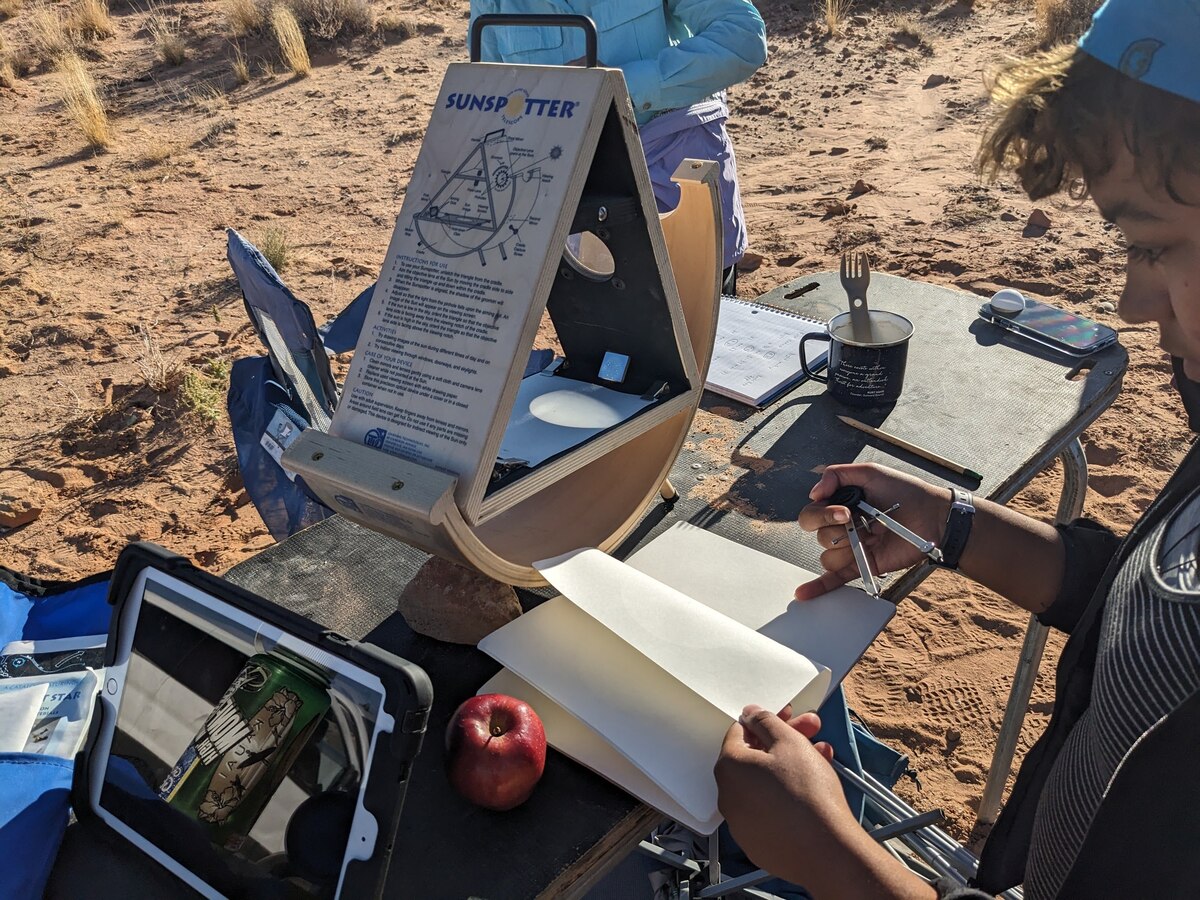
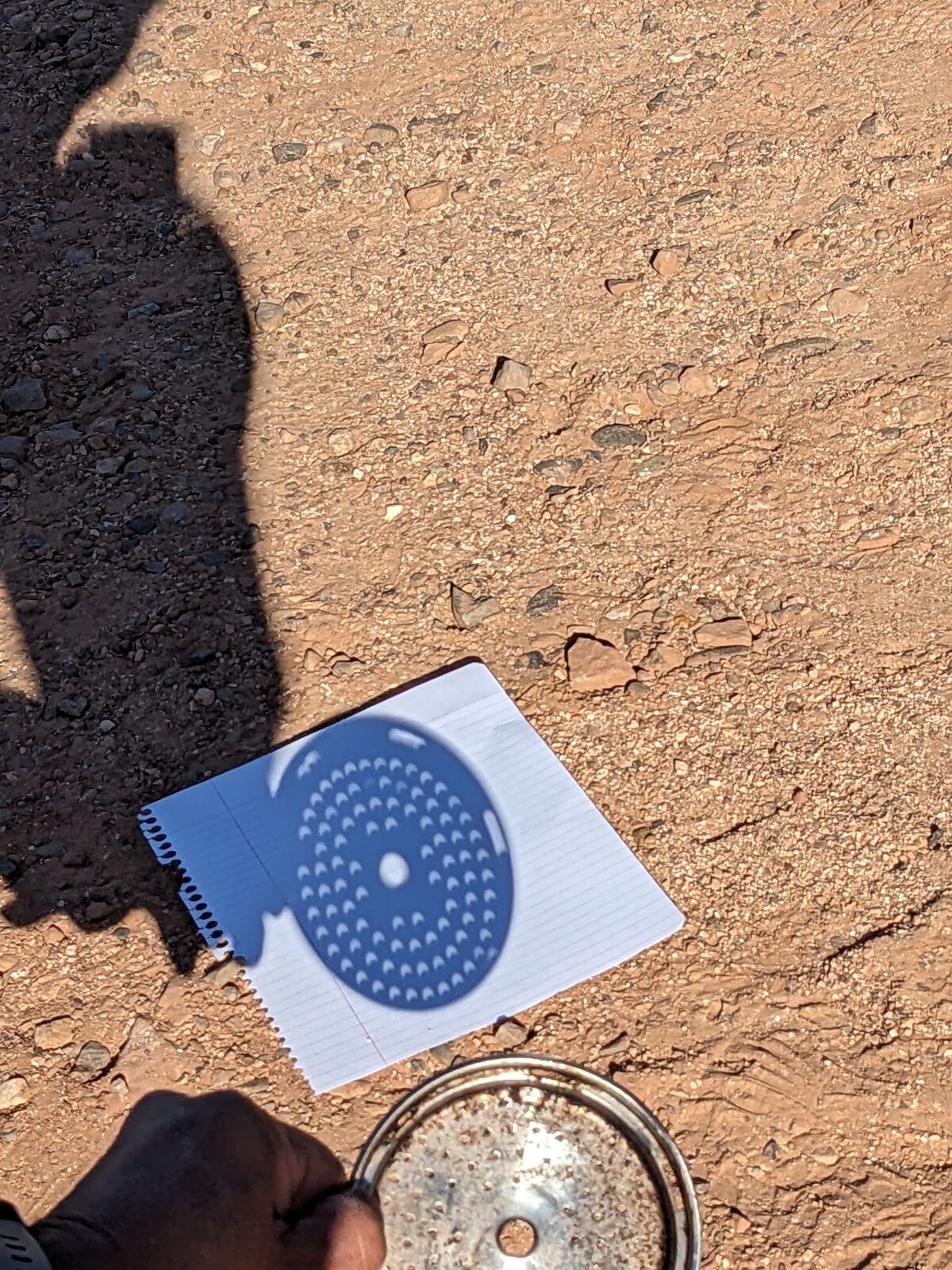
This eclipse was Ian's first in-person experience and a first for Unistellar. Unistellar recently released its new Solar Experience app, enabling users to automatically track and observe the Sun. This eclipse served as a "stress test" for this new feature. While the tracking briefly faltered during totality when the Moon blocked most of the Sun's light, it remarkably resumed as the Sun re-emerged, providing valuable data for improving the tracking algorithm and enhancing the user experience.
The "ring-of-fire" eclipse lasted about four and a half minutes, accompanied by a noticeable drop in temperature and a surreal stillness at the observing site. Words could hardly capture the experience as the Moon completed its passage in front of the Sun, restoring the world to its normalcy.
Ian thoroughly enjoyed celebrating the eclipse and connecting with the new UCAN members. The UCAN initiative promotes observational astronomy and inquiry-based science education experiences for teachers and students. Experiences like the one provided by Professors Paul McCudden and Patrick Staib left a lasting impact on Ian. He encourages everyone to attempt to witness the eclipse on April 8, 2024, as it is an unforgettable and awe-inspiring experience.
Below are additional photos and videos shared with Ian from other UCAN and Unistellar team members that participated during the eclipse. Many more people were also able to observe the eclipse in person thanks to the generous donation of eclipse glasses from Astronomers Without Borders. They can be followed on social media under #OnePeopleOneEclipse #MyEclipseStory.
